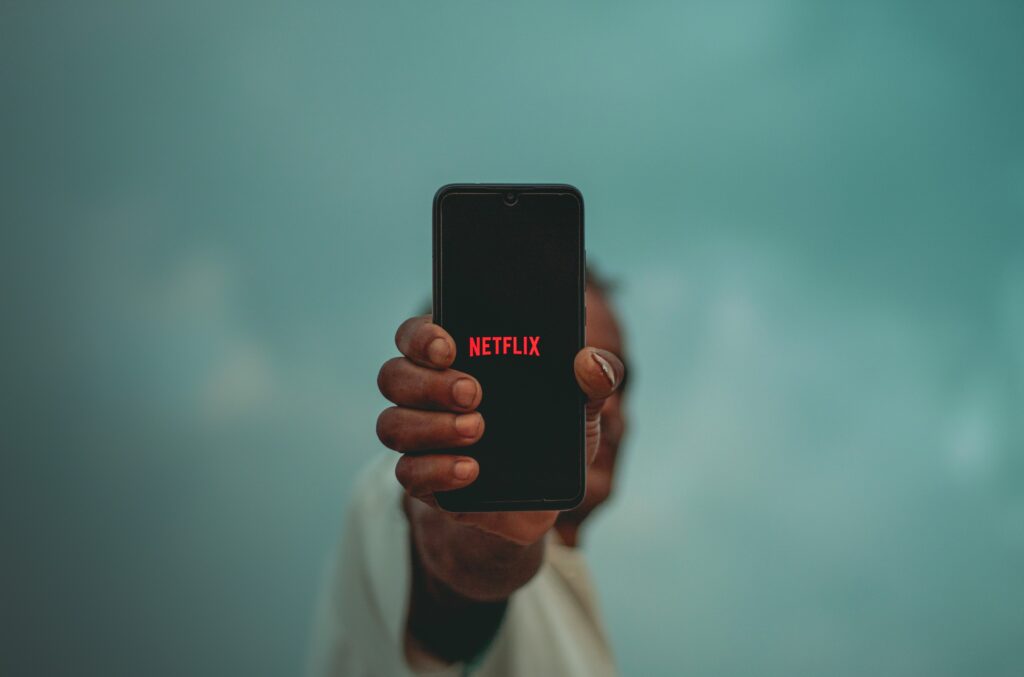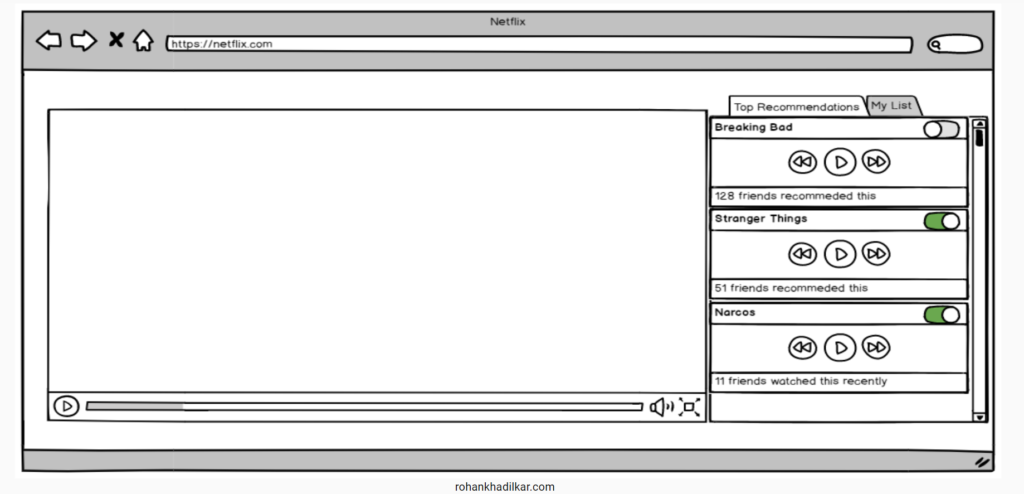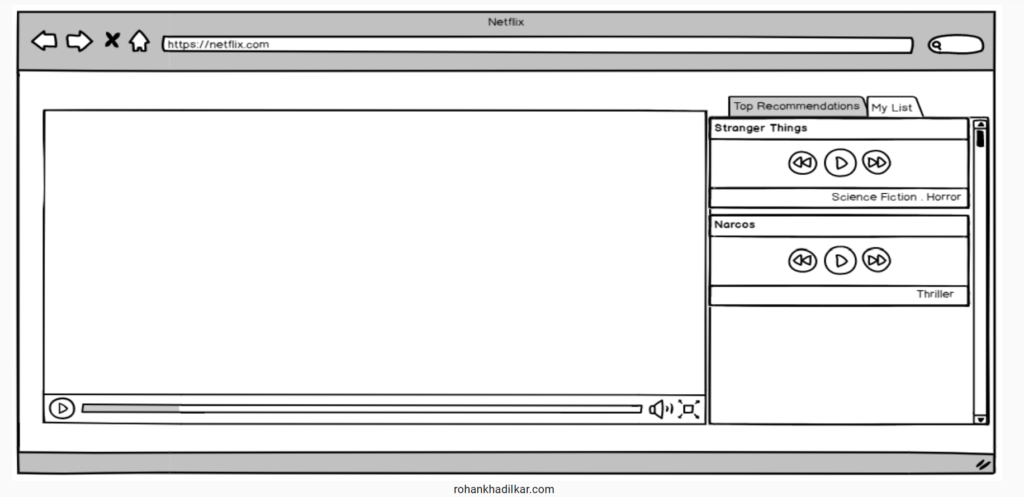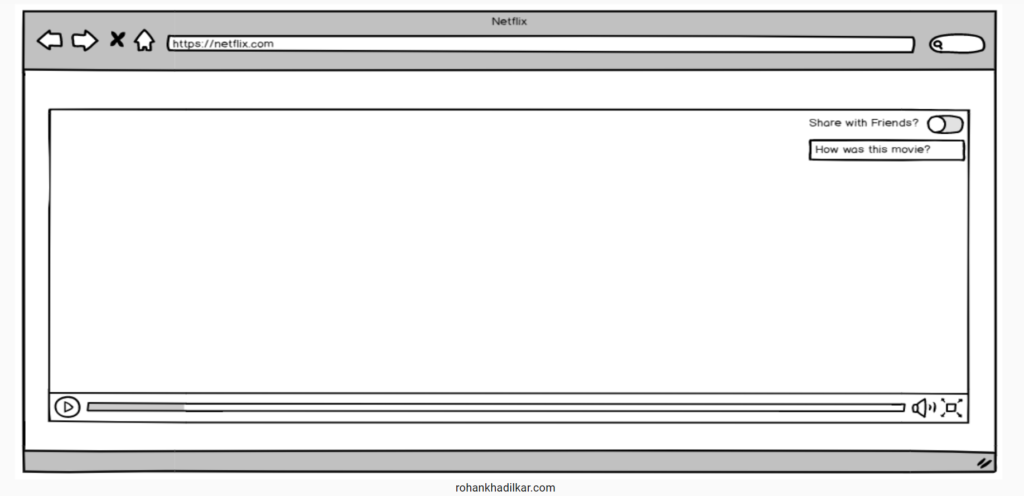Couple years back, I had enrolled in a product management course at Product School and my final project made me dive deep into the world of OTT. I’m a huge fan of Netflix – the company, the product, the story, the vision.. pretty much everything and my overambitious project idea revolved around making an already seemingly perfect product better.
So when it came to deciding on what I wanted to work on, I already had an answer.

I spent significant time researching the entire OTT landscape – how big the industry is, who the different players in the space are, how matured the products are, what their acquisition and monetization strategy is and what the long term vision looks like.
While this business and industry context was helping shape a narrative in my head, I knew I hadn’t talked to consumers yet. I sent out surveys and held 1 on 1 interviews to learn more about the behavior patterns of users. It went really really well. I learnt a great deal about what OTT platforms users are subscribing to, how much they’re willing to pay and how they decide what movie/show to watch next.

But there was 1 specific answer that I was struggling to wrap my head around.

Close to 70% of users said they use smartphone for streaming content. That was too high a number and it came as a big surprise to me – because I belonged to the remaining 30% minority. That’s why consumer research is so so important. Product 101 is keeping your personal biases/preferences aside and identify what your users want.
To keep the survey as short as possible, I skipped asking the user’s location and age which in hindsight, I should have asked for. Mapping demographic data to device preference would’ve been more insightful. While I didn’t have the location data, answers to the other questions in the survey gave me the inkling that most of my responses have come from India.
Here’s where my timeline becomes important – I moved to the US in August 2015. Netflix was launched in India five months later, in January 2016. India was still a cable first society when I left. OTT hadn’t found its calling yet. My first encounter with Netflix happened in the US – initially on my laptop, and I later transitioned to TV. Not watching Netflix on my phone was a personal choice – I preferred the larger screens (and so did most of the people around me).
But India was behaving differently. Why?
Things started becoming clearer once I moved back home. My personal experiences, a lot of internet research and some (thoughtful?) assumptions have led me to these answers –
Cheap data plans and affordable smartphones
The disruption Indian telecom industry saw in recent years has been unprecedented. Data plans have never been lower (Reliance Jio came to the market with dirt cheap data plans in 2016 and that either put competitors out of business or they were forced to drive their prices down as well) and smartphones have never been this affordable. Companies therefore had to go to where the audience was – mobile. In fact, India was one of the first countries where Netflix launched a mobile-only plan way back in 2019. Amazon Prime, and Disney+ Hotstar soon followed suit. Also, there are 210 million TV-owning households in India. Contrast that with the 750 million Indians with a smartphone. That’s 3x the addressable market for these entertainment behemoths to go after. After all, more users translates to higher revenue.
Penetration into tier 2/3 cities
What many of the OTT platforms realized pretty quickly was that the linguistic diversity of India warranted a different content strategy. To cater to the masses, especially in rural and semi-urban India, they had to churn out movies and shows in the many regional languages we have. And they did. Today, all OTT platforms have forayed into content beyond Hindi and English, and often also cite this to differentiate themselves in this crowded market. Also, with purchasing power in tier 2/3 cities slightly on the lower side, it comes as no surprise that a smartphone is lot more affordable than a laptop or a TV. So guess where all this content is getting streamed?
Family structure
While nuclear families have become commonplace in India, it’s also still quite normal to see 3 generations staying together as a part of one big joint family. Barring the rare family movie nights, watching Netflix is in my eyes a very private thing – one that you either do by yourself or maybe with your partner. Note that 95% of Indian households are single TV homes, which makes personal mobile experiences all the more important. Also, there’s a lot of stuff on OTT that’s Not Safe For the Indian Living Room (NSFILR – yes, I just made this up). Feel free to watch that nature documentary on your living room TV, but Game of Thrones is well, a mobile-only show meant to be watched with your backs against the wall.
I’ll leave you with some crazy statistics –
87% of online video in India is watched on a mobile phone
– 2019 survey from KPMG
65% of video consumption comes from the rural parts of India that have only 40% online connectivity
– 2019 report by Broadband India Forum
India’s video OTT market is expected to touch $12.5 billion by 2030
– 2021 report by RBSA Advisors
On a different (but relevant) note – for the project I mention at the very beginning of this essay, one of the feature ideas I came up with was to add an option to share recommendations with friends.
I envisioned something like this –
Turns out Netflix had already tried this social strategy back in 2004 and it had failed.




One Response
Very well written and explained Rohan! Shows how market segmentation and strategy are important depending on external and internal factors.
Comments are closed.